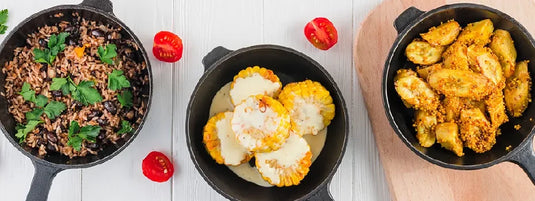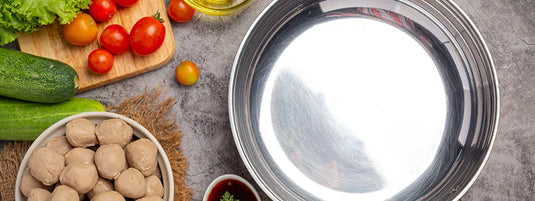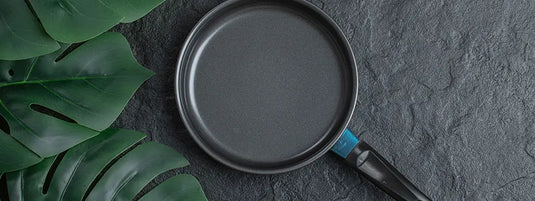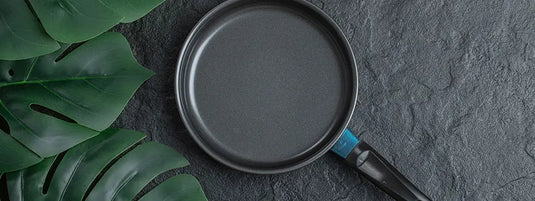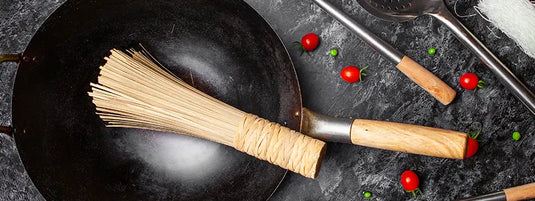When preparing healthy meals, the cookware you choose can impact both nutrition and long-term wellbeing. New scientific findings show that cookware materials can alter not just the taste but also the safety of what you eat. By opting for non-toxic cookware, you reduce your exposure to harmful chemicals and can even enhance the nutritional value of your meals. This guide reviews the safest cookware materials, explains the latest health research, and helps you pick the healthiest cookware for your needs.
Why Your Cookware Choice Matters: Evidence and Expert Insights
Recent research warns that traditional non-stick pans, especially when overheated, can release microplastics and toxic fumes, including PTFE (polytetrafluoroethylene) and PFOA (perfluorooctanoic acid). Independent studies and dietary guidelines from leading organizations such as the Indian Council of Medical Research (ICMR) confirm that frequent exposure to these chemicals may affect long-term health. Non-toxic cookware made from evidence-backed materials helps you cook safer, purer meals while supporting better health outcomes over time.
Research-Backed Safe Cookware Materials
1. Cast Iron: Natural Iron Booster Backed by Science
Cast iron cookware increases the iron content in food, making it especially beneficial for people with iron deficiency. Peer-reviewed studies show consistent use can help reduce anemia rates. Properly seasoned and maintained, cast iron lasts a lifetime and is free from PTFE and PFOA chemicals.
Key benefits:
- Increases dietary iron naturally
- Great heat retention and even cooking
- Durable—often passed down for generations
Consider adding a versatile cast iron skillet or kadai to boost both health and flavor in everyday cooking.
2. Stainless Steel: The Reliable, Non-Reactive Workhorse
High-quality stainless steel (look for 304/316 food-grade) is recognized as safe and non-reactive, even with acidic recipes, as confirmed by independent university testing. Stainless steel resists rust, is easy to clean, and does not alter the taste or composition of food. Triply stainless steel cookware, which sandwiches an aluminum core between two stainless layers, ensures even heating while avoiding direct contact with food.
Why choose stainless steel?
- Safe for daily, high-heat cooking
- Resistant to rust and corrosion
- No chemical leaching, even with acidic foods
- Low maintenance and dishwasher safe
3. Pure Clay and Ceramic: Preserving Nutrients Naturally
Pure clay cookware is favored for its gentle, even heating and ability to retain both moisture and nutrients. Recent studies show these pots are completely chemical-free if unglazed. They also enhance food digestibility through their slight natural alkalinity. Choose only unglazed, naturally finished clay or ceramic cookware for the healthiest results.
Key benefits:
- Retains vitamins and minerals in food
- Free from synthetic chemicals or coatings
- Ideal for slow-cooked recipes and roasts
Backed by Science: Why Non-Toxic Cookware Wins
Peer-reviewed research links frequent use of older non-stick and low-grade aluminum pans to increased metal and chemical exposure. Aluminum cookware, in particular, has been shown to leach more when cooking acidic foods or if worn. By contrast, stainless steel, cast iron, and pure clay offer lasting safety when sourced from reputable manufacturers and cared for properly.
Care and Maintenance for Long-Lasting Healthy Cookware
Cast Iron
- Season regularly with a thin coat of oil and heat
- Clean without soap (for seasoned pans) and dry right after use
- Apply a light layer of oil before storage to prevent rusting
Stainless Steel
- Clean promptly with mild soap and non-abrasive sponges
- Allow pans to cool naturally before washing to prevent warping
- Remove tough stains with baking soda or vinegar
Clay & Ceramic
- Soak new pots before first use
- Hand wash and dry completely after each use
- Avoid sudden temperature changes to prevent cracking
Expert Tip: Building Your Health-Conscious Kitchen
Start by replacing worn non-stick and aluminum pans with one quality stainless steel pan, a cast iron skillet, and a pure clay pot. Over time, phase out any cookware that shows signs of damage. Investing in research-verified cookware supports your family’s health—and often produces more delicious results.
Shop Kichera’s Non-Toxic Cookware Collection
At Kichera, we source only high-grade cast iron, stainless steel, and clay cookware—each validated by scientific evidence and designed for a lifetime of safe, healthy cooking. Browse our non-toxic cookware range to take the next step towards better cooking.
Summary
Research strongly supports moving away from synthetic-coated, low-grade metal cookware in favor of modern cast iron, stainless steel, and pure clay. Each of these materials has unique benefits and has stood up to independent scientific scrutiny. Choosing wisely today will support healthier meals and greater kitchen peace of mind for years to come.
